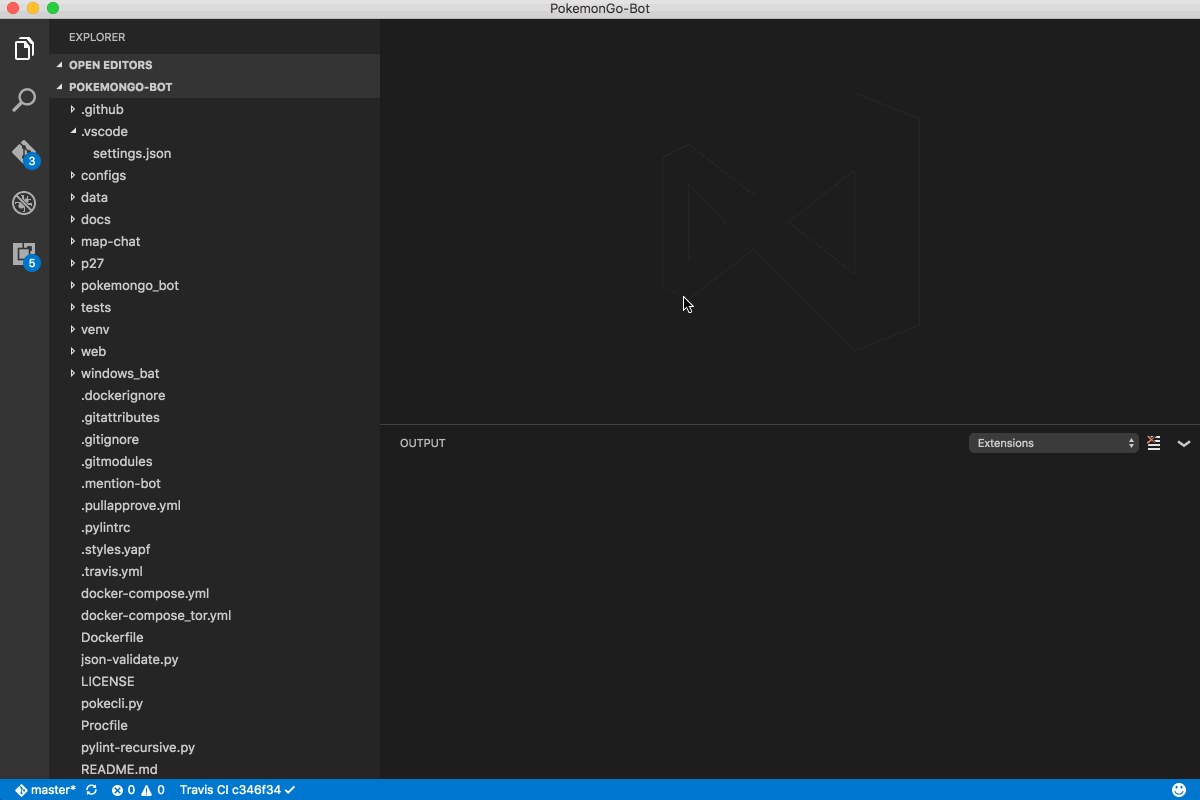Visual Studio Python Interpreter
2.1. Invoking the Interpreter¶
The Python interpreter is usually installed as /usr/local/bin/python3.9on those machines where it is available; putting /usr/local/bin in yourUnix shell’s search path makes it possible to start it by typing the command:

to the shell. 1 Since the choice of the directory where the interpreter livesis an installation option, other places are possible; check with your localPython guru or system administrator. (E.g., /usr/local/python is apopular alternative location.)
On Windows machines where you have installed Python from the Microsoft Store, the python3.9 command will be available. If you havethe py.exe launcher installed, you can use the pycommand. See Excursus: Setting environment variables for other ways to launch Python.
I’ve been doing some experimenting with pipenv to simplify my nascent Python programming workflows and also with Visual Studio Code as a cross-platform code editor. So naturally I want VS Code to use the python version from my pipenv-based virtual environment (as one does). I also want the compiled.pyc files to not show up in the explorer view. Setting Up Visual Studio Code for Python. It's now time for the exciting part! Go ahead and open the Visual Studio Code application. The first time you open the application (and after installing updates), you are greeted with information on new additions in the latest version. You can go ahead and close the two (or if you only have one) tabs. Select Installed Python Interpreter In Visual Studio Code. You can select which python interpreter to use by clicking the select python environment option on the bottom left corner of the visual studio code status bar. If you had used one python environment, you can click it to change to use another python environment. Visual Studio Code is an open-source code editor that was developed mainly for the development and debugging of the latest web and cloud projects. It is capable of combining both editor and good development features very smoothly. It is one of the major choices for python developers. Python for Visual Studio Code is an extension for Visual Studio which aims at providing you with the best python development environment and experience possible. The extension is built for the Visual Studio Code IDE that is built from the ground up using Open Source technologies such as NodeJs.
Typing an end-of-file character (Control-D on Unix, Control-Z onWindows) at the primary prompt causes the interpreter to exit with a zero exitstatus. If that doesn’t work, you can exit the interpreter by typing thefollowing command: quit().
The interpreter’s line-editing features include interactive editing, historysubstitution and code completion on systems that support the GNU Readline library.Perhaps the quickest check to see whether command line editing is supported istyping Control-P to the first Python prompt you get. If it beeps, youhave command line editing; see Appendix Interactive Input Editing and History Substitution for anintroduction to the keys. If nothing appears to happen, or if ^P isechoed, command line editing isn’t available; you’ll only be able to usebackspace to remove characters from the current line.
The interpreter operates somewhat like the Unix shell: when called with standardinput connected to a tty device, it reads and executes commands interactively;when called with a file name argument or with a file as standard input, it readsand executes a script from that file.
A second way of starting the interpreter is python-ccommand[arg]..,which executes the statement(s) in command, analogous to the shell’s-c option. Since Python statements often contain spaces or othercharacters that are special to the shell, it is usually advised to quotecommand in its entirety with single quotes.
Some Python modules are also useful as scripts. These can be invoked usingpython-mmodule[arg].., which executes the source file for module asif you had spelled out its full name on the command line.
When a script file is used, it is sometimes useful to be able to run the scriptand enter interactive mode afterwards. This can be done by passing -ibefore the script.
All command line options are described in Command line and environment.
2.1.1. Argument Passing¶
Python Select Interpreter Command
When known to the interpreter, the script name and additional argumentsthereafter are turned into a list of strings and assigned to the argvvariable in the sys module. You can access this list by executing importsys. The length of the list is at least one; when no script and no argumentsare given, sys.argv[0] is an empty string. When the script name is given as'-' (meaning standard input), sys.argv[0] is set to '-'. When-ccommand is used, sys.argv[0] is set to '-c'. When-mmodule is used, sys.argv[0] is set to the full name of thelocated module. Options found after -ccommand or -mmodule are not consumed by the Python interpreter’s option processing butleft in sys.argv for the command or module to handle.
Vs Studio Python
2.1.2. Interactive Mode¶
When commands are read from a tty, the interpreter is said to be in interactivemode. In this mode it prompts for the next command with the primary prompt,usually three greater-than signs (>>>); for continuation lines it promptswith the secondary prompt, by default three dots (..). The interpreterprints a welcome message stating its version number and a copyright noticebefore printing the first prompt:
Vs Code Select Python Interpreter
Continuation lines are needed when entering a multi-line construct. As anexample, take a look at this if statement:
Moxa port devices driver download for windows. For more on interactive mode, see Interactive Mode.
